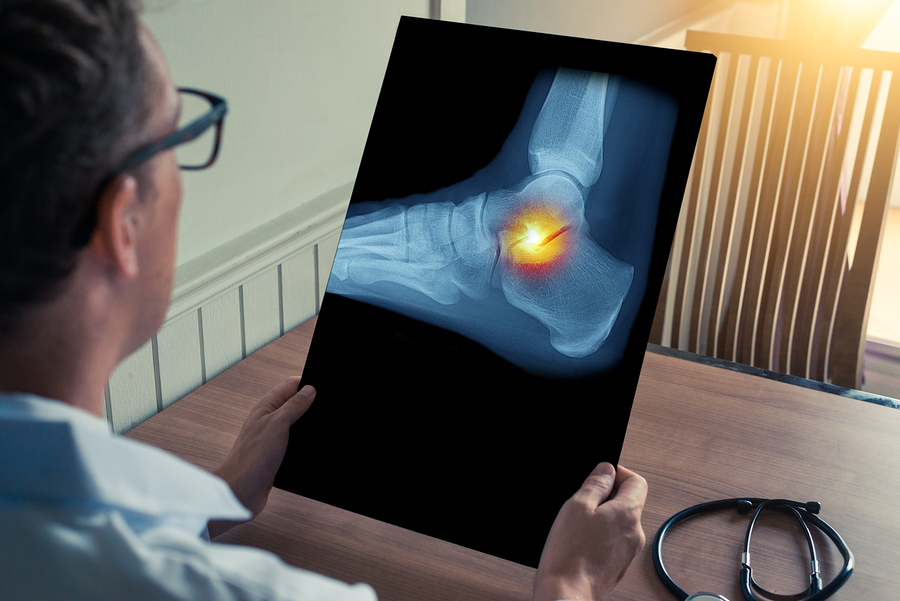If you have ever been unfortunate enough to break your ankle then you will know that orthopedic doctors also refer to this injury as an ankle fracture. Either one or more of the bones in the ankle joint will be broken, and the amount of broken bones will determine how difficult it is to resume normal tasks.
If just one bone is broken then you may still be able to walk, be it with some level of discomfort. If several bones have been broken then your ankle might be quite severely out of place and in need of a great deal of rest. In this instance, keeping your weight off of the ankle joint will be pivotal to effective healing.
Damage to the Ligaments
When you have a broken ankle it is also possible that the incident will have caused damage to the ligaments in the area. It is the job of the ligaments to keep the joints and bones in the correct position. Therefore it is quite important that the ligaments heal correctly. This will help to prevent future problems.
Who Might Experience an Ankle Fracture
Although anyone at any age can suffer with an ankle fracture, there has been an increase in recent years of elderly people experiencing them more than other groups of people. This is thought to be partially due to the amount of ‘baby boomers’ that lead active lives into their later years.
Making an extra effort to keep your body healthyas you age is always a good idea when it comes to helping to avoid things like bone fractures, and even breaks.
The Symptoms of a Broken Ankle
The symptoms of a person suffering with a broken ankle can include pain, bruising, swelling and a deformed appearance of the foot. The ankle will also likely be very tender to touch. An X-ray can be quickly ordered to correctly diagnose this injury and then the course of treatment can begin.
Treatment Options and Recovery
If your orthopedic doctor opts for a non-surgical approach to treatment then this will imply that your ankle is fairly stable and the affected bone is not too far out of place. A leg cast or a special shoe will be used to protect the area during the healing process and the period of inactivity will be prescribed by your doctor depending on the severity of the injury. Regular checkups will be required to ascertain if the ankle is healing as it should.
If surgery is the necessary route of treatment then this will be because the injury is considered to be unstable. During the operation the bone fragments will be repositioned back into alignment. Special screws will then be used, alongside metal plates, to hold these fragments together with the outer surface of the bone.
It is important that you take care of yourself and follow the advice of your doctor when you are healing from this kind of injury.
Click to read more about managing an ankle fracture!
The recovery process following surgery will take approximately 12 weeks. Reaching full mobility may take longer, and the swelling may stay for years in some cases.
In the beginning of your recovery it is good to ask for help in doing any chores that might require you to leave your home for an extended period of time. You will be able to move around with crutches, so an ankle fracture should not leave you completely bedridden.
There is likely to be pain and swelling after any surgery and a broken ankle is no exception. Your doctor might give you pain medication, and in addition, it is good to keep your leg elevated above knee height for extended periods of time. Remember to always keep you ankle protected and supported. You can also apply ice to reduce the swelling and ease any discomfort.
It is absolutely vital that you do not put any weight on your ankle before you have the permission of your healthcare professional. This is because too much weight on healing bones might put you straight back to square one!
Your ankle might need special support, such as an ankle brace. This could be the case for several months whenever you are doing any exercise that might expose a risk of injury.
Muscle strength will return to the ankle gradually and it is normal for your injured ankle to feel weaker and different than the healthy one, even several years later. In order to gain more strength and mobility, you will need to follow an exercise routine that supports the healing process.
Physiotherapy
Physiotherapy is only helpful if and when you add to it with the right kind of home exercise. You will get instructions from your physician and it is essential that you stick to your routine and keep doing your exercises.
As your healing continues, you will notice that you will be able to walk longer distances. Listen to your body and be mindful of pain and discomfort. Be careful to increase any strain gradually and try not to over-do it.
Ongoing Issues
If your ankle becomes considerably more swollen or painful, or your skin starts getting pins and needles or turns a blue tone, then you should go back to your doctor as soon as possible. These might be signs of infection or problems with blood flow. Any of these possibilities could quickly become quite serious.
The complication risk of ankle fractures is not very high. Up to two years afterwards, children who have broken their ankle should have regular check-ups to make sure the ankle is forming correctly and growing at the same pace as the other one.
References
1) http://www.nhs.uk/conditions/broken-ankle/Pages/Introduction.aspx
2) https://www.aofas.org/footcaremd/conditions/ailments-of-the-ankle/Pages/Ankle-Fracture.aspx
Related Posts
Cigarettes May Inhibit Inflammation Treatments
Axial spondyloarthritis, also known as AxSpa, is a chronic…










